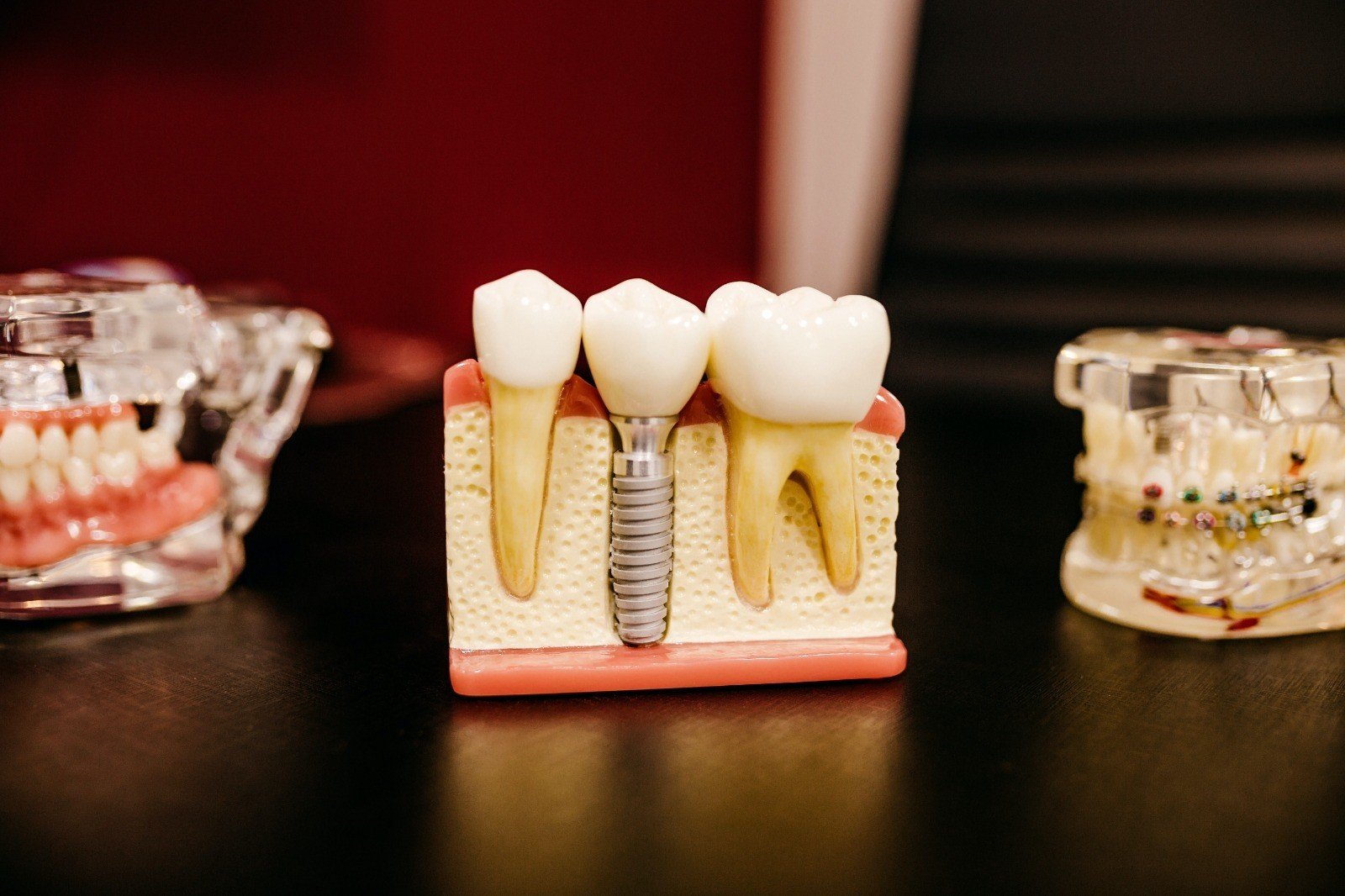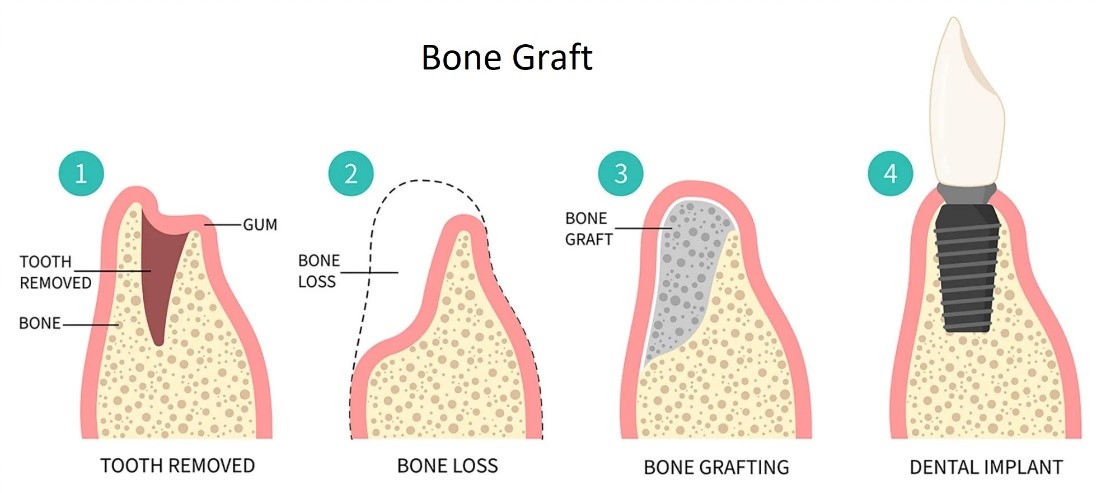Dental Implants
Dental implants are designed to replace missing teeth. They consist of three main parts: a sturdy post that serves as an artificial tooth root, an abutment that connects the post to a crown or prosthesis, and a crown or prosthetic tooth that mimics the appearance and function of a natural tooth.

The implant process typically involves these key steps:
Placement: Our dentist will surgically implant the post into the jawbone. This post gradually fuses with the bone through a process called osseointegration, providing stability and strength.
Abutment Attachment: After the implant has integrated with the bone (usually over a few months), an abutment is attached to the post. It serves as a connector between the implant and the prosthetic tooth.
Crown or Prosthesis: Finally, a customized crown or prosthesis is securely attached to the abutment. This prosthetic tooth is carefully crafted to match the shape, size, and colour of your surrounding teeth, restoring both functionality and aesthetics.

In some cases where there is insufficient bone in the jaw to support an implant, a bone graft procedure may be necessary. Bone grafts involve adding bone material to the jawbone to create a sturdy foundation for the implant. This additional treatment ensures the long-term success of dental implants.
Implants offer several advantages, including durability, a natural appearance, and the ability to chew and speak comfortably. They also help maintain jawbone health by stimulating bone growth, preventing bone loss that can occur with missing teeth.
Bone Grafts
Dental bone grafts are surgical procedures used in dentistry to restore or augment bone tissue in the jaw. These grafts are often necessary when there is insufficient bone to support dental implants or to address bone loss due to periodontal (gum) disease, injury, or tooth extraction. During the procedure, a small piece of bone is used to place in the targeted area of the jaw. The graft material serves as a scaffold for new bone growth, allowing for the successful placement of dental implants or the preservation of jawbone structure.

